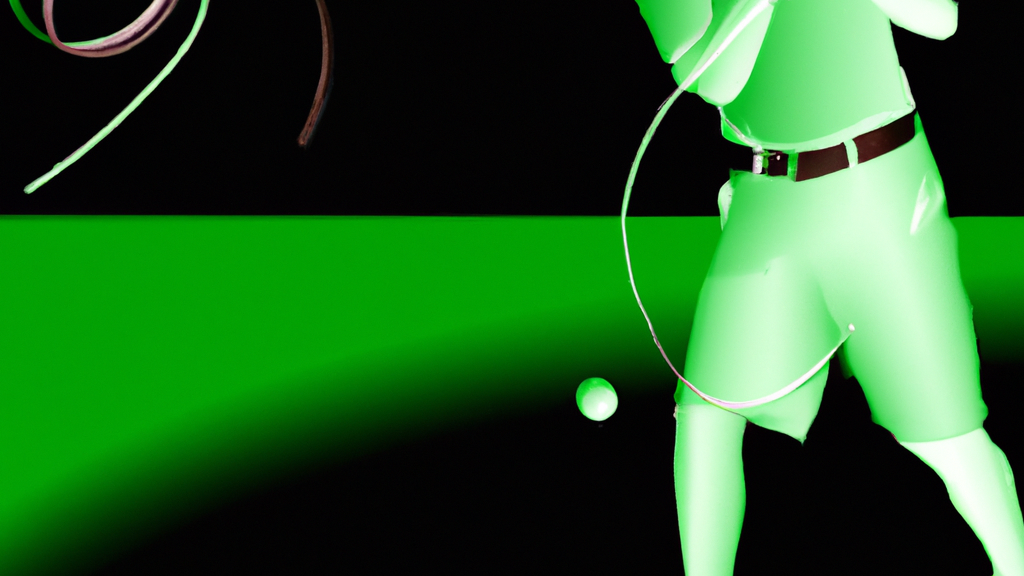HOW TO MANAGE HEAT STRESS ON YOUR GOLF COURSE
Golf courses are a beautiful sight to behold, with their lush greenery and well-manicured lawns. However, the summer months can bring about a significant challenge for golf course managers and groundskeepers – heat stress. With temperatures soaring, it’s essential to take measures to ensure the safety of golfers and staff alike. In this blog post, we’ll explore the best ways to manage heat stress on your golf course, from identifying the signs of heat exhaustion to implementing preventative measures.
Whether you’re a golf course manager, groundskeeper, or avid golfer, this guide will provide you with the knowledge and tools you need to keep everyone safe and comfortable during the hot summer months. So, let’s dive in and learn how to manage heat stress on your golf course.

HOW TO MANAGE HEAT STRESS ON YOUR GOLF COURSE
As the summer months approach, golf course managers and superintendents must prepare for the challenges of managing heat stress on their courses. Heat stress can have a significant impact on the health and safety of golfers, as well as the maintenance of the course itself. In this article, we will discuss the best practices for managing heat stress on your golf course.- Understand the Risks of Heat Stress
- Monitor Weather Conditions
- Provide Adequate Shade and Water
- Adjust Course Conditions
- Train Staff on Heat Stress Prevention
- Encourage Golfers to Take Breaks
- Use Heat Stress Monitoring Tools
- Consider Altering Tee Times
- Communicate with Golfers
- Have a Heat Stress Plan in Place
Heat stress occurs when the body is unable to regulate its internal temperature, leading to a range of symptoms, including dehydration, fatigue, and heat exhaustion. In extreme cases, heat stroke can occur, which can be life-threatening. Golfers are particularly susceptible to heat stress due to the physical demands of the sport, as well as the prolonged exposure to the sun.
One of the most important steps in managing heat stress on your golf course is to monitor weather conditions. Keep an eye on the forecast and be prepared to adjust your maintenance schedule accordingly. If temperatures are expected to be high, consider starting maintenance tasks earlier in the day or rescheduling them for a cooler time.
Golfers need access to shade and water to stay cool and hydrated on the course. Make sure that there are plenty of water stations throughout the course, and encourage golfers to drink water regularly. Consider providing additional shade structures, such as umbrellas or canopies, to help golfers stay cool during breaks.
During periods of high heat, it may be necessary to adjust the course conditions to reduce the risk of heat stress. For example, consider raising the height of the cut on the greens to reduce stress on the turf. You may also need to adjust the frequency of mowing or reduce the amount of fertilizer applied to the course.
All staff members should be trained on the signs and symptoms of heat stress, as well as the best practices for prevention. Encourage staff to take breaks in shaded areas and to drink water regularly. Make sure that staff members are equipped with the appropriate personal protective equipment, such as hats and sunscreen, to protect themselves from the sun.
Golfers should be encouraged to take breaks during their round to rest and rehydrate. Consider placing benches or chairs at strategic locations throughout the course to provide a place for golfers to rest. You may also want to consider offering a complimentary bottle of water to golfers at the start of their round.
There are a variety of tools available to help you monitor heat stress on your golf course. For example, some courses use heat stress sensors to monitor the temperature and humidity levels on the course. This information can be used to adjust maintenance schedules and to alert staff and golfers to potential risks.
During periods of high heat, it may be necessary to alter tee times to reduce the risk of heat stress. Consider starting tee times earlier in the day or later in the evening to avoid the hottest part of the day. You may also want to consider reducing the number of tee times available to allow for longer breaks between groups.
Communication is key when it comes to managing heat stress on your golf course. Make sure that golfers are aware of the risks of heat stress and the steps that they can take to prevent it. Consider posting signs throughout the course reminding golfers to drink water regularly and to take breaks in shaded areas.
Finally, it is important to have a heat stress plan in place to ensure that everyone on the course is prepared for the risks of high heat. This plan should include steps for monitoring weather conditions, adjusting maintenance schedules, providing shade and water, training staff, encouraging breaks, using monitoring tools, altering tee times, communicating with golfers, and responding to emergencies.
In conclusion, managing heat stress on your golf course is essential for the health and safety of golfers, as well as the maintenance of the course itself. By understanding the risks of heat stress, monitoring weather conditions, providing shade and water, adjusting course conditions, training staff, encouraging breaks, using monitoring tools, altering tee times, communicating with golfers, and having a heat stress plan in place, you can ensure that your golf course is prepared for the challenges of high heat.

- Managing Summer Stress
Jun 2, 2017 … Ten Ways To Mitigate Summer Stress On Putting Greens … Fore The Golfer: Managing Summer Heat Stress On Golf Courses. The turfgrass on a … - 5 Ways to Battle Heat Stress on Your Golf Greens | BrightView
1. Needle tine before summer heat kicks in… and every 2-4 weeks. Needle tining, or venting, is an important practice to help … - How to Prevent Heat Stress on the Golf Course – Golf Safety
The best way to treat this illness to rest and hydrate by drinking water or electrolyte beverages. Heat Rash. Heat rash is a common illness caused by sweating … - Heat illness in golf course maintenance – GCMOnline.com
Aug 23, 2021 … Heat exhaustion is a dangerous form of heat illness, and if unmonitored or mistreated, it can progress to heatstroke. You must monitor and treat … - The heat is on: Protect golf course turf during high temperatures – Turf
Jul 9, 2020 … High temperatures will stress turfgrass in the next week. … and improve water management, hand watering is commonplace on golf courses. - The Heat is On – Golf Course Industry
We are trained to see the heat stress in turf, slight discoloration, … and member/management communication benefits the superintendent during hot and … - Summer stress of turf on golf courses – MSU Extension
Aug 10, 2012 … The drought and heat during the 2012 summer has resulted in … water management, hand-watering has become commonplace on golf course … - Golf course superintendents: Top tips for surviving summer
Jul 22, 2015 … The underlying reason for turfgrass decline from heat stress in creeping … Coping mechanisms to deal with heat stress include managing … - Golfing in the heat: How to keep your cool – Sanford Health News
May 31, 2018 … Stay hydrated. Having a beer or two during your golf game isn’t the worst thing in the world, but water or sports drinks should be the primary … - How to Protect and Maintain Athletic Fields in the Heat of Summer
May 20, 2021 … Heat stress is the underlying factor that weakens turf to the extent that … Atheltic Field Safety; Golf Course Management; Home Lawn Care.
Stuff about How to Manage Heat Stress on Your Golf Course you didn’t know
- Golf originated in Scotland in the 15th century and was originally played with a stick and ball.
- The first golf club was formed in Edinburgh, Scotland, in 1744.
- The Masters Tournament is one of the most prestigious golf tournaments held annually at Augusta National Golf Club since 1934.
- Tiger Woods is considered one of the greatest golfers of all time with a record-breaking career that includes winning four consecutive major championships from 2000-2001.
- Arnold Palmer, known as “The King,” won seven major championships during his career and helped popularize golf on television during the 1960s.
- Country clubs were originally exclusive social clubs for wealthy individuals to gather and participate in leisure activities such as tennis, swimming, and dining together.
- Many country clubs have strict dress codes requiring collared shirts or specific colors to be worn on certain days or events.
- Caddies have been an integral part of professional golf since its inception but are now less common due to advancements in technology such as GPS devices that provide distance measurements for players’ shots





